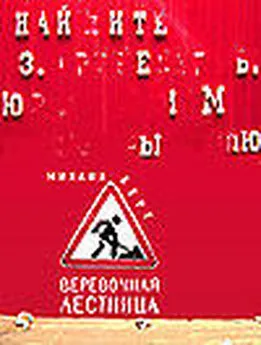Michael Dibdin - Dark Specter
- Название:Dark Specter
- Автор:
- Жанр:
- Издательство:неизвестно
- Год:неизвестен
- ISBN:нет данных
- Рейтинг:
- Избранное:Добавить в избранное
-
Отзывы:
-
Ваша оценка:
Michael Dibdin - Dark Specter краткое содержание
Dark Specter - читать онлайн бесплатно полную версию (весь текст целиком)
Интервал:
Закладка:
Before Kristine Kjarstad could speak to the boy, she had to listen to the Shelden woman’s version of events. This was of no particular interest to her, but Kjarstad had no desire to antagonize anyone at this stage, particularly a witness who was clearly in shock. It took her the best part of thirty minutes-it felt more like ninety-to sift the facts of the story out of a mass of confused and repetitive responses. The root of the problem was that instead of calling 911 herself, Kelly Shelden had called her husband.
This is after she gets to the house and finds Dawn Sullivan lying face down on the floor. She has no idea what’s happened or what to do about it, and Jamie just sits there howling, so she calls Chuck at work, who calls Emergency. He knows all about the Sullivans, of course, so he naturally assumes that Wayne and Dawn have been duking it out again, which is why the call went out as a domestic.
Once she’d got that straightened out, Kristine Kjarstad spent another five minutes getting Mrs. Shelden out of her hair so that she could talk to the boy. She tried everything she knew, not just from training but from her own experience with her son Thomas, who was about the same age. She talked about Mr. and Mrs. Valdez, about Jamie’s clothes, about his new toy, about anything except the horrors he had allegedly witnessed. She tried to get him to look at her, to address a single word to her-any word.
And she failed. Jamie just sat there, hugging the bear listlessly and gazing into space. She might as well have been speaking a foreign language. She might as well not have been there. To all intents and purposes she wasn’t. Jamie was alone at the epicenter of a psychic blast which had wiped out all life in the vicinity. It would take rescue workers days if not weeks to get through to him. The question was what to do with him until then.
A confusing session with the attention-seeking Kelly Shelden and the idiomatically-challenged Valdez couple elicited the information that there were two more members of the Sullivan family unaccounted for, a teenage girl and the estranged husband. As far as they knew there were no other family members living locally. Mrs. Shelden insisted stridently that Jamie should come and stay with her and Chuck, but Kristine Kjarstad did not feel that this would be in anyone’s best interests. In the end she called in to DSHS and arranged for a social worker to get out there and place the boy in temporary foster care.
It wasn’t the ideal solution, she reflected as she made her way back across the street, but it was the best one available. The only responsible adult relative was the boy’s father, Wayne, and at this stage he was also the principal suspect.
The crime scene technicians were still at work in the basement, but in other respects the preliminary investigation was almost complete.
The medical examiner had come by and certified that the victims were dead, and the corpses of the mother and baby had been removed to the morgue. Steve Warren had compiled notes and sketches of every room in the house, and the other two dicks, Harrison and Borg, had interviewed the neighbors.
Mr. Valdez had been out in the front yard the whole time, working on a car, but neither he nor anyone else had seen or heard anything unusual, despite the fact that at least four shots had been fired. A magnum or a shottie might have attracted attention, but not the small-bores that inflicted these injuries. Even in the next room, a.22 or.25 sounds no louder or more alarming than a book falling to the floor. In the next house, or outside in the street, you wouldn’t even notice it.
As for Wayne Sullivan, none of the neighbors knew where he’d been living since the couple split up, or if they did they weren’t saying. Where the police were concerned, most of these people had been on the receiving end most of their lives. Talking to the cops didn’t come easy.
“But it’s got to be him,” Steve Warren asserted confidently. “He has a record of domestic violence. Only this time he went all the way, took out the whole family.”
He and Kristine Kjarstad had drifted instinctively into the kitchen, the only part of the house untouched by death. In the corner, the fridge hummed sturdily away as though nothing had happened, and at any moment the family would appear and start rooting around for something to eat.
“Except he didn’t,” said Kristine. “The boy survived somehow, the daughter wasn’t around. And what about the other kid?”
She’d just been downstairs. The basement was another world, raw, inconclusive, a place of botched projects and provisional arrangements become permanent by default. There were various utility rooms and a half-finished bar-cum-den. In the center of the floor, the furnace roared hollowly. Two rooms opened off the other wall. The bedrooms looked identical at first sight, full of boys’ stuff: maps and posters on the wall, a globe, an empty fish tank, wooden dinosaurs, a shelf of tattered books and comics, a football, a catcher’s mitt, unwashed clothes strewn on the floor, Lego pieces, a marble, coins, a shell collection. But the two cadavers which lay stiffening on the bed and the floor didn’t conveniently fit the matching decor, because the fourth victim was clearly Asian.
“Then there’s the MO,” Kristine Kjarstad continued. “This guy sounds like a violent slob, a wife-beater. You’d expect him to use a shotgun, something messy like that, not a neat shot to the back of the head. This looks more like an execution.”
Warren shrugged uneasily.
“Maybe there’s a drug angle. They could have gotten involved with the gangs …”
His voice trailed away. He looked around at the line of stoneware jars marked Dawn’s Kitchen, the dirty dishes stacked at all angles in the sink, the stove cover set with pictures of birds, a pizza delivery box with one limp slice inside, an open box of Cheerios, the unicorn spice rack, an empty plastic gallon milk container, the mock-crochet sign reading Bless This Mess…
His face sagged suddenly. He looked old and lost.
“Jesus Christ,” he said quietly. “What is this?”
A week later, there was still no answer to this question.
By now the identity of all the victims had been established. Three were members of the Sullivan family: Dawn, thirty-three, a checker at the local Kmart, and two children, Kevin, eleven, and Samantha, fifteen months. The fourth was Ronald Ho, twelve, resident at 2337 Fourth Avenue, a classmate of Kevin Sullivan at Renton Heights School.
All had been killed with a single CCI Stinger.22 round fired at very close range. Such bullets break up on entry, splitting up to six times inside the body, and it was thus impossible to recover any further ballistics information. The mother and the two boys had been shot in the back of the head, the baby in the forehead. There was no sign that anything had been stolen from the house, and none of the victims had been sexually molested before or after death.
Three members of the family had survived. Megan, fourteen, had been spending the day with a friend, Nicole Pearson. Her brother Jamie, eight, had apparently been in the house at the time of the shootings. It was not clear why he had been spared, or whether he could identify the perpetrator. At present he was in foster care under the nominal supervision of social workers. Kristine Kjarstad had interviewed him on three occasions, without result. The boy now seemed to hear and understand her questions, but responded only by shrugging his shoulders and shaking his head. On each occasion the social worker had brought the interview to an end, indicating that further pressure could compromise the child’s eventual recovery.
The remaining survivor and primary suspect was the estranged husband, Wayne Sullivan, thirty-seven. The fact that the door had not been forced suggested that the perpetrator was either known to Mrs. Sullivan or possessed a key. The couple had a history of domestic violence, and the crime seemed to fit a pattern of cases in which depressive or vengeful spouses killed their entire families shortly after a separation or divorce.
Two factors weighed against this hypothesis. The first was that the spouses in question usually killed themselves at the same time, or gave themselves up to the police immediately afterward. The second emerged from the autopsy report on Mrs. Sullivan and the two boys, which revealed mild contusions and abrasions around the wrists and traces of adhesive on the lips and surrounding skin, suggesting that the victims had been bound and gagged before being shot. That, like the choice of weapon, seemed to indicate the work of a cold-blooded professional killer, not an emotionally wrought spouse, but no one had been able to come up with a convincing reason why such a killer should choose to execute a housewife, two schoolboys and a baby-unless of course it was a case of mistaken identity.
Police work is a percentage game, and at the moment the smart money was on the estranged husband.
If he hadn’t given himself up, Wayne Sullivan would have been a hard man to find. His driver’s license was still registered to the Renfrew Avenue address. He didn’t have a bank account or hold a regular job, and was staying at a semi-derelict house he shared with two other men in a forgotten patch of Renton blighted by the Burlington Northern tracks on one side and Highway 405 on the other.
Fortunately he made life easy for everyone by turning himself in just a few hours after the all-points bulletin went out.
Sullivan’s story was that he had spent the day painting an empty apartment in Bellevue, a subcontract he’d picked up from a friend in the construction business. It wasn’t much of an alibi, but Kristine Kjarstad didn’t get too excited about that. One look at Wayne, you knew this guy didn’t have a life , so why should he have an alibi? And while he did admit to having a gun, it turned out to be a.30-caliber Remington hunting rifle. He claimed that he had spent the day painting the Bellevue apartment and had heard of the killings on the radio as he was driving home. He was offered and accepted a polygraph test, which he passed. Tests for nitrates on his hands and face proved negative. His fingerprints had been found at the scene, but not on the bodies or clothing, and since he regularly visited the house, and had lived there until recently, this proved nothing.
There wasn’t enough evidence to hold Wayne Sullivan for the killings, but Kristine Kjarstad ran a computer scan which showed that there was a warrant out in his name for unpaid traffic fines amounting to $145. Sullivan couldn’t pony up, so he was taken across the street to spend the night in the King County jail. Meanwhile Kjarstad obtained a warrant and ordered a search of the house in Renton. This turned up a.22 automatic pistol belonging to one of the other residents, but it was loaded with a different type of ammunition from that used in the killings and showed no sign of having been recently fired. Moreover, the absence of spent cartridges at the scene meant that the perpetrator had either carefully collected them after shooting-in itself inconsistent with the domestic scenario-or had used a revolver instead of an automatic.
Then two things happened that changed the whole tenor of the case. The first was that the social worker looking after Jamie Sullivan contacted the police with the news that the boy had started to talk about what had happened. Kristine Kjarstad tried without success to get him to respond directly to her questions, but the foster mother reported that Jamie had told her that he had been concealed behind a service hatch in the furnace housing as part of a game of hide-and-seek with the other two boys. While there, he had heard strange voices in the house. One had said something about “a piece of wood,” presumably referring to the panel covering Jamie’s hiding place, which had fallen off. The other man had used the name “Russ.”
Читать дальшеИнтервал:
Закладка:










